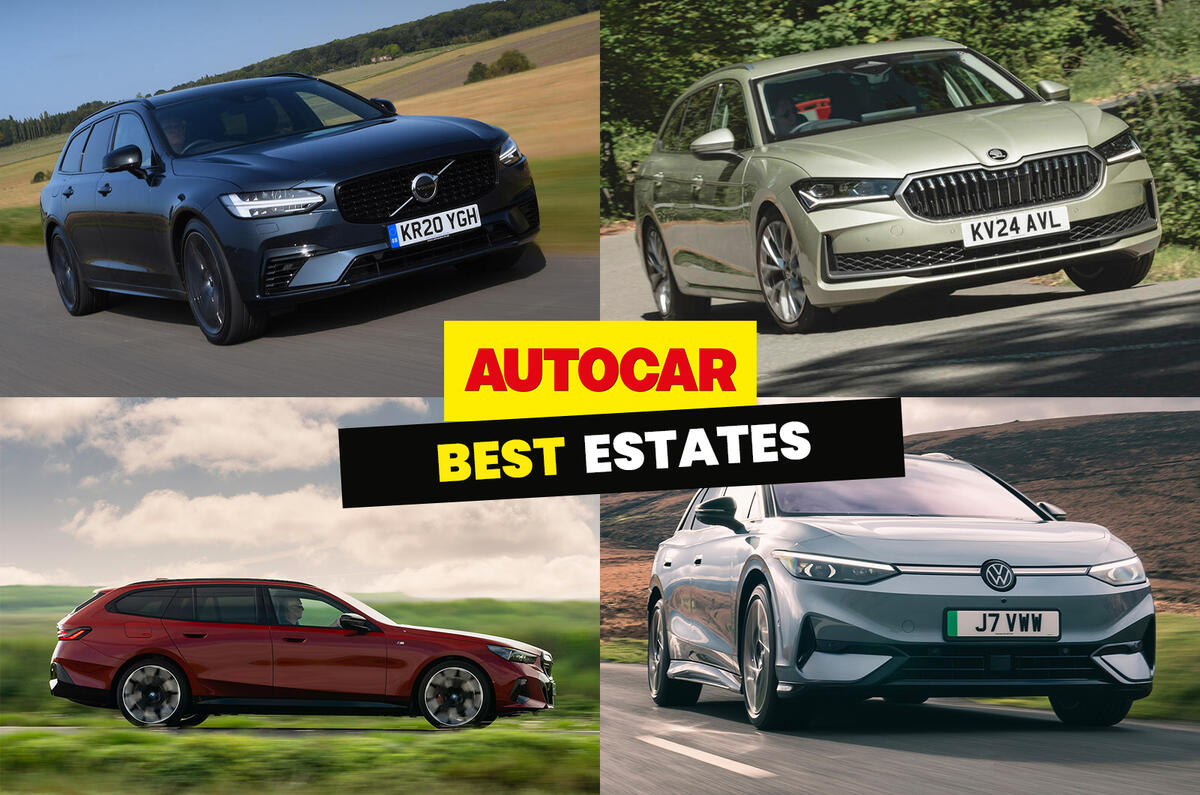The best estate cars – driven, rated and ranked
Our list of the very best load-lugging wagons you can buy new today, with something to suit all budgets
News


by Illya Verpraet and Jack Warrick
10 mins read
14 April 2025
Share
While the vast majority of drivers enjoy life with their family SUV, the estate car is still going strong.
Packed with bags of appeal, versatility and practicality in equal measure, the best estates combine the versatility of an SUV with the dynamic precision of a saloon.
Many argue they satisfy the cliché of being ‘all the car you’ll ever need’ more than their raised and blocky SUV counterparts.
Related articles
- The best large SUVs – driven, rated and ranked
- The best small SUVs – driven, tested and ranked
- The best sports cars – driven, rated and ranked
- Skoda Superb Sleeper Edition brings 470bhp and chassis overhaul
- Skoda Superb review
The current crop of estates is incredibly diverse, too, which means there are endless options when it comes to size, performance and functionality.
The list is so broad that you can have anything from a simplistic, mile-munching diesel to a more luxurious, materially-rich shooting brake.
There’s also a growing choice of electric estate cars on sale, with models from brands including Volkswagen, Audi and MG.
Be it superb ride comfort, exceptional efficiency or supercar-baiting performance and handling, there’s an estate to suit every taste and budget.
The best estate car on sale today is the Skoda Superb, which lives up to its name for its spacious interior, versatile powertrain line-up and its driving dynamics to such a degree that we rated it a perfect five stars in our road test.
There’s a host of other rivals worth considering, though, so read on as we list the 10 best estate cars on sale in the UK today.
1. Skoda Superb Estate
10
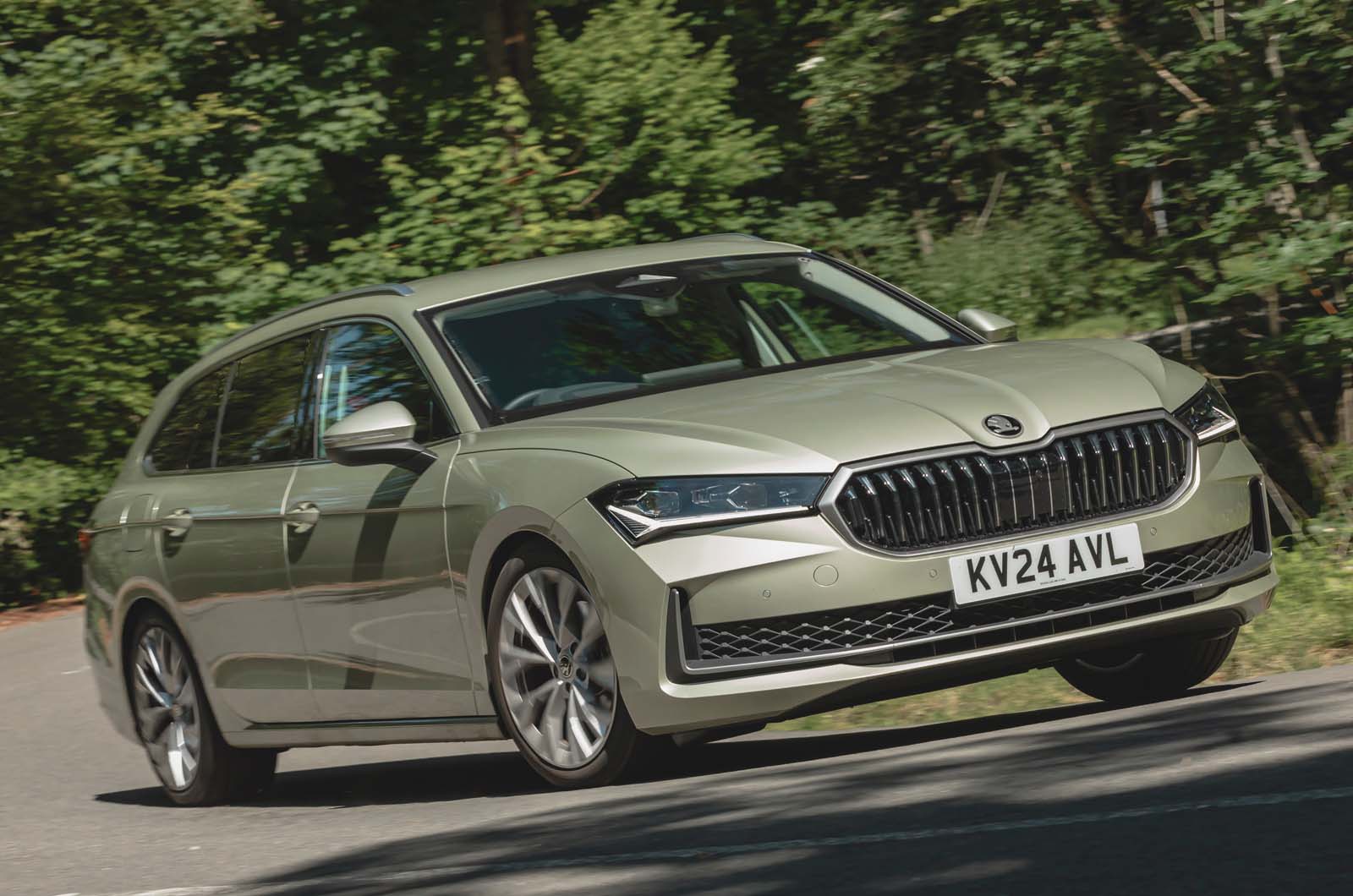
- Design10
- Interior10
- Performance8
- Ride & Handling9
- Costs9
Pros
Excellent mix of petrol, diesel and hybrid powertrains
Pleasing interior ambience and usability
Serious company car credentials as a PHEV
Cons
Low-speed ride a little wooden
Dual-clutch ‘box can be a little clunky at times
Interior quality is mixed bag
Best for: Daily driving
Big, traditional and offering a choice of petrol, diesel and hybrid powertrains, the Skoda Superb is a prime example of how Skoda can use Volkswagen Group’s hardware and software and tweak them to create a truly likeable, accessible and more usable car.
Skoda has produced a car that is outstandingly fit for purpose, making the case for the estate car like few current rivals.
The fourth-generation model majors on practicality, versatility, comfort and ease of use, much like its predecessor, only this time there’s even more space inside and greater efficiency from its engines.
It rides on the same MQB Evo platform as the Volkswagen Passat, hence it offers the same 690 litres of boot space – or 1920 litres with the 60/40-split rear seats folded flat.
Boot space drops to 510-litres in the plug-in hybrid version, with its huge 25.7kWh battery stored under the boot floor.
We can’t fault the Superb’s PHEV credentials, though, as it promises a company car tax-friendly electric-only range of 84 miles. Impressive stuff.
There’s the usual mix of petrol and diesel engines, with the latter being tipped to be a big seller here, after the PHEV and 1.5-litre mild-hybrid petrol. The diesel is quiet, hard-working and has the potential for good fuel economy.
The Superb isn’t particularly sporty or overtly comfortable, but it neatly balances the two. The long body is kept well in check and the steering builds weight as you load up the suspension in a corner, giving you plenty of confidence in the car’s roadholding.
And while the standard car’s ride lacks some finesse at lower speeds, our experience of cars with optional DCC adaptive dampers suggests they’re more supple, offering the ride comfort you would expect a Superb to deliver.
Read our Skoda Superb Estate review
Save money on a new Skoda Superb Estate with What Car?
Finance this car with Drivenfi
Latest Reviews

Mercedes-AMG CLE 53
8

Volkswagen Tiguan
7

Honda Civic Type R
9

Used BMW 3 Series Touring 2012-2019 review
9
Used BMW 3 Series Touring 2012-2019 review

Aston Martin Vantage Roadster
Read our review
Car review

Skoda Superb
Czech firm continues to make the case for diesel estates with its stalwart family hauler
Back to top
2. Volkswagen ID 7 Tourer
9

- Design8
- Interior9
- Performance8
- Ride & Handling8
- Costs9
Pros
The finest-riding electric car of any stripe at this price point
Among the most practical estates, with limo-like occupant space
Tidy handling and such easy drivability are old-school VW
Cons
Infotainment controls are improved but still frustrate at times
Not the most inspiring product in terms of subjective appeal
Can get pricey
There’s a lot to like about the Volkswagen ID 7 Tourer, the German brand’s first electric estate.
It’s one of the most well-rounded options for drivers with long commutes, boasting a range of over 400 miles and maximum charging speeds of 200kW.
The ID 7 is arguably the most rounded package in the class.
The ID 7 comes as standard with a single motor set-up producing 282bhp and 402lb ft of torque, topped by a 335bhp, four-wheel-drive GTX variant.
It may be large and heavy, and it’s not quite as sporty as a Tesla Model 3 or BMW i4 saloon, but the ID 7 is still one of the most well-rounded estates – and electric cars – on sale in the UK today. It feels agile, offers more than enough poke and grips well in the corners.
The ID 7 Tourer has a 545-litre boot – 13 litres bigger than the ID 7 saloon’s – and that capacity rises to 1714 litres with the rear seats folded down,
Read our Volkswagen ID 7 Tourer review
Save money on a new Volkswagen ID 7 Tourer with What Car?
Finance this car with Drivenfi
3. BMW 3 Series Touring
9

- Design8
- Interior8
- Performance8
- Ride & Handling9
- Costs8
Pros
Excellent driving dynamics
World-class blend of performance and economy
Handy glass tailgate
Cons
Beginning to look expensive
Transmission isn’t as dexterous as it could be
Ride can become choppy on passive M Sport suspension
Best for: All-round ability
The BMW 3 Series Touring packs many of the 5 Series Touring’s strengths into a more compact package.
It continues to handle like a powerful, poised, rear-driven sports saloon no matter how hard you care to push it.
Few estates at any price are as good to drive, the 3 Series’ mix of agility, driver engagement and right-sized exterior making it feel at home on any twisting stretch of Tarmac.
And while it rides a little firmer than some, the sense of solidity and excellent refinement mean it’s also relaxing when you just want to mooch.
The 3 Series also features a lavishly appointed and finished interior, while the boot will swallow 500 litres (or 410 litres in the PHEV) with the rear bench in place.
A facelift in 2022 mostly concerned the interior, where the 3 Series gained a massive curved screen but lost a lot of its physical controls. We’re no great fans of BMW’s latest iDrive operating system, but at least the presence of the signature rotary controller makes up for a lot.
The 3 Series also had its engine line-up slashed in the UK. The regular range now consists of a 2.0-litre petrol and a 2.0-litre PHEV, but you can still have a straight six petrol in the form of the M340i.
These are also joined by the magnificent 503bhp BMW M3 Touring, which has all the M3 super-saloon’s incredible pace and poise but an extra dose of practicality as well.
Read our BMW 3 Series Touring review
Save money on a new BMW 3 Series Touring with What Car?
Finance this car with Drivenfi
Back to top
4. Toyota Corolla Touring Sports
9
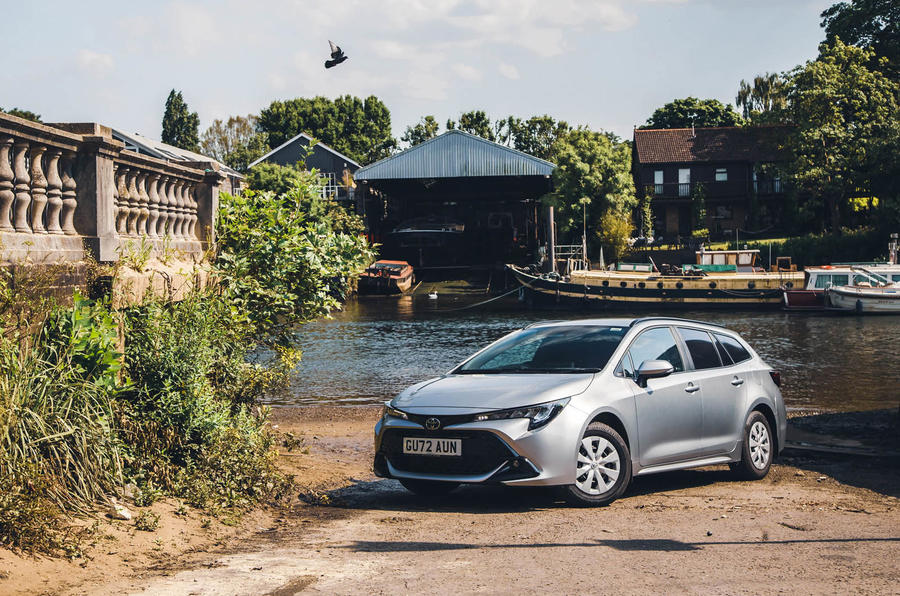
- Design8
- Interior8
- Performance8
- Ride & Handling8
- Costs9
Pros
Excellent economy
Surprisingly capable handling
Nice ride
Cons
Gearbox’s manual mode is a token gesture
Some disappointing cabin fittings
Poor infotainment
Best for: Economy
There was a time not that long ago when ‘Toyota Corolla‘ was a byword for humdrum transport: it was durable and dependable but dynamically flat and devoid of charm.
The Corolla isn’t the hottest, most exciting or trendiest thing around, but there’s something very pleasingly fit for purpose about it.
However, that all changed with the 12th-generation car, which features all the Corolla’s traditional strengths but mixes in some style and a big dollop of driver appeal.
Thanks to the Toyota Next Generation Architecture, the Corolla is blessed with a fine ride and handling balance that makes it a genuine pleasure to steer down your favourite road and afford genuine comfort and refinement.
These days, the Corolla is always a petrol-electric hybrid, but you do have the choice of a 1.8-litre or 2.0-litre engine. The 1.8 can be incredibly frugal on congested roads, but the 2.0 might be the better option if you do a lot of motorway miles.
The interior isn’t quite up to premium standards and the infotainment is fairly lacklustre, but there’s decent space and it’s robustly built.
Likewise, the boot lacks some of the clever features of rivals, but it’s roomy enough and benefits from a low loading lip and a decent shape.
It’s worth noting that the 1.8 has a slightly bigger boot, because its 12V battery can go under the bonnet, whereas the 2.0’s has to live in the boot: 696 litres plays 581.
Read our Toyota Corolla Touring Sports review
Save money on a new Toyota Corolla Touring Sports with What Car?
Finance this car with Drivenfi
5. Volvo V90
9
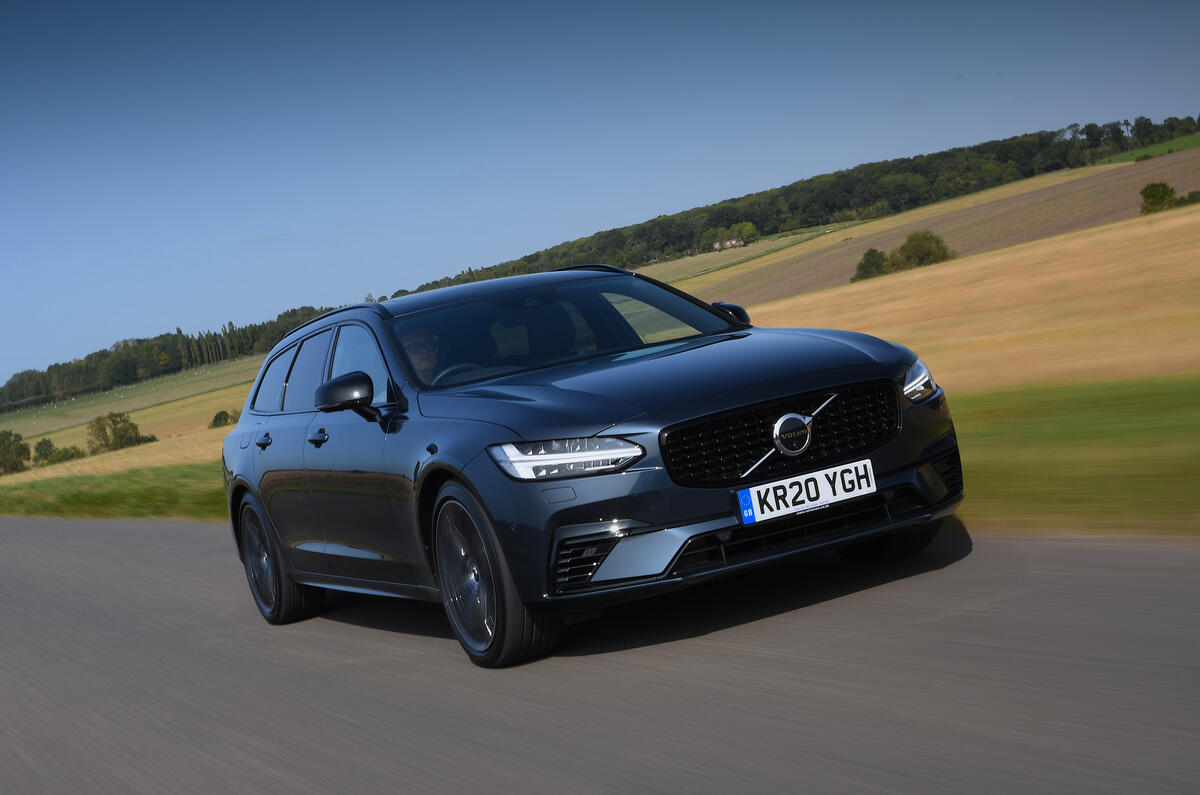
- Design9
- Interior8
- Performance8
- Ride & Handling8
- Costs7
Pros
Sleek looks
Exceptionally refined
Impressively practical
Cons
Not the most exciting
Lack of sporting prowess
Now comes as a PHEV only
Best for: Style
After being taken off sale in a shift towards SUVs, the Volvo V90 estate returned to the UK in the middle of 2024, and we’re glad it did.
The V90 counts suave design, a heightened focus on safety, exceptional rolling refinement, impressive practicality and impeccable roundedness as its star attributes.
Now available exclusively as a plug-in hybrid, the V90 offers two powertrains with considerable punch: 345bhp and 448bhp.
Both will crack 0-62mph in less than 5.5sec and will do over 50 miles on electric-only power.
We’ve long been big fans of the V90’s exceptional refinement and practicality, but there are some concessions, due to its PHEV-only line-up. Some V90s previously offered 560 litres of boot space, but there’s a reduced 490 litres on offer in PHEV versions, due to the placement of the battery.
Read our Volvo V90 review
Save money on a new Volvo V90 with What Car?
Finance this car with Drivenfi
Back to top
6. Dacia Jogger
9
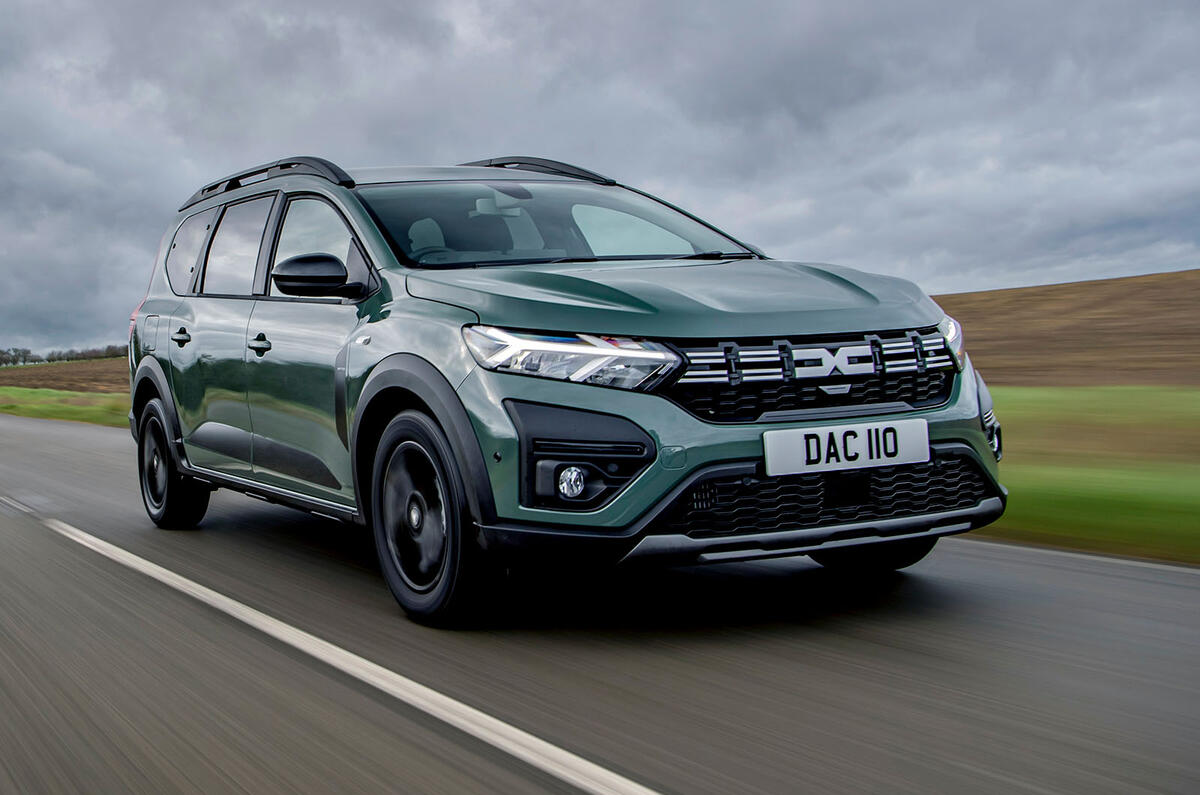
- Design8
- Interior8
- Performance8
- Ride & Handling7
- Costs9
Pros
Class-leading value for money
Useable third row of seats
Frugal engines
Cons
Lacks some active safety systems
Passenger space isn’t as generous for adults
Powertrains lack a bit of mechanical refinement
Best for: Value
Is it an estate? Is it an MPV? Is it an SUV? It does have seven seats and a mildly raised ride height, but we reckon the Dacia Jogger is an estate – and a really good one too.
The Jogger is a product unlike any rival. An MPV/estate/crossover/SUV that’s both affordable and versatile enough to insert itself into myriad buying conversations and ownership scenarios.
Given the rampant rise in the cost of living that we’ve experienced in the past few years, the Jogger is particularly welcome. It offers all the space and utility you need, including a genuinely usable third row of seats, for significantly less money than most standard hatchbacks.
And it’s not as if Jogger drivers have to give up a lot of creature comforts. Yes, the plastics are hard and there’s no plush leather on the seats, but Dacia has grown very adept at brightening up its interiors with a strip of fabric here and a bit of faux knurled aluminium there without breaking the bank.
Go for one of the still very reasonably priced higher trims and you get heated seats, cruise control and sat-nav, as well as a touchscreen infotainment system that works more logically than a lot of fancier systems.
The 1.0-litre petrol engine is no powerhouse but, thanks to the snappy six-speed manual gearbox, it can get out of its own way well enough.
If you must have an automatic transmission, the Jogger Hybrid is the one to go for, and it returns very impressive fuel economy.
The Jogger rides well on its soft suspension but has enough inherent balance to still be enjoyable on a twisty road. Some might scoff at the one-star Euro NCAP safety rating, but the Jogger protects still its occupants perfectly well in a crash; it was instead marked down for the absence of some active safety systems. Those can be less of a help than a hindrance on some cars, so it’s not the biggest loss.
The Jogger offers lots of space for relatively little money in what is quite a cheery and pleasant package. It’s the opposite of a luxury car, but it’s hard not to like.
Read our Dacia Jogger review
Save money on a new Dacia Jogger with What Car?
Finance this car with Drivenfi
7. Mercedes-Benz E-Class Estate
8
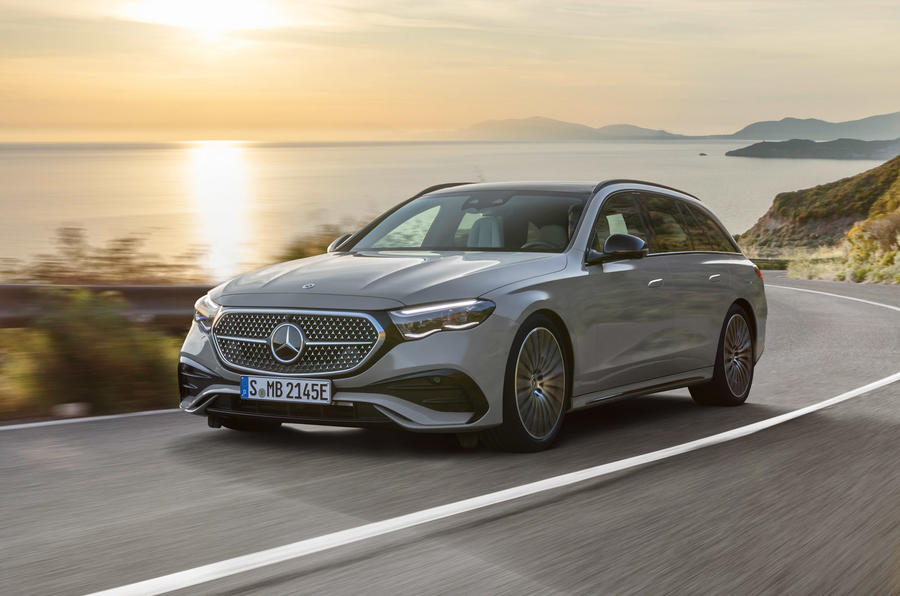
- Design8
- Interior8
- Performance8
- Ride & Handling8
- Costs8
Pros
Massive 615-litre boot
Lots of interior technology
PHEV has class-leading electric-only range
Cons
No four-wheel steering in the UK
Expensive
PHEV’s battery eats into the boot space
Best for: Opulence
Does the E-Class get any more convincing than in estate form? We do not think so because if a big Mercedes‘ role is to convey enviable comfort to the whole family, this is where you should spend your money.
The E-Class has a clear goal: to be the bridge between the traditional executive saloon and the electric, ultra-connected cars of the near future.
With the seats in place, there’s a healthy 615 litres of boot space, while dropping the 40/20/40-split folding rear bench liberates 1830 litres (although as with other cars here, the PHEV’s version is smaller, at 460-1675 litres).
The cavernous, flat-floored load area is also well shaped, and there’s a low load lip and a powered tailgate, all of which make it easier to transport awkward items.
Higher trims get what Mercedes calls the Superscreen, which fuses a large central screen and a smaller screen for the passenger in a large expanse of black.
The E Class Estate has one of the more versatile powertrain line-ups in this list, with a choice of petrols, diesels and hybrids, but our pick of the range is the PHEV, with its 67 miles of electric range and softer suspension set-up.
Read our Mercedes-Benz E-Class Estate review
Save money on a new Mercedes-Benz E-Class Estate with WhatCar?
Finance this car with Drivenfi
Back to top
8. BMW 5 Series Touring
8

- Design8
- Interior7
- Performance9
- Ride & Handling9
- Costs7
Pros
Stylish cabin
Strong power reserves
Slick infotainment
Cons
Brittle ride comfort
Lacks BMW’s stand-out handling
Adaptive suspension not standard
Best for: Power and performance
The latest BMW 5 Series arrived amid some controversy, losing its diesel engine in the UK and gaining the German brand’s edgier new styling.
A recorded 0-60mph time of 4.4sec makes the 550e 0.2sec quicker than the V10-hearted E60-generation M5. And we suspect this is also the first sub-M-car to sprint to 100mph in less than 10sec.
The range now consists of petrols and BIK-friendly plug-in hybrids, starting with the 202bhp 520i.
The PHEVs offer more punch, ranging from 297bhp to 482bhp, hitting 0-62mph in as little as 4.4sec. That’s supercar speed, plus you get 54 miles of electric range.
Then there’s the all-electric i5 Touring, which offers up to 592bhp and 348 miles of range.
Practicality is still the 5 Series’ strong suit, with a boot measuring 570 litres, which increases to 1700 litres with the rear seats folded flat.
And if those hybrid powertrains aren’t enough, there’s also the seriously powerful (and seriously heavy) M5 Touring. That gets a hefty 717bhp and a 0-62mph sprint time of just 3.9sec, plus around 40 miles of electric-only range.
Read our BMW 5 Series Touring review
Save money on a new BMW 5 Series Touring with What Car?
Finance this car with Drivenfi
9. Ford Focus Estate
8
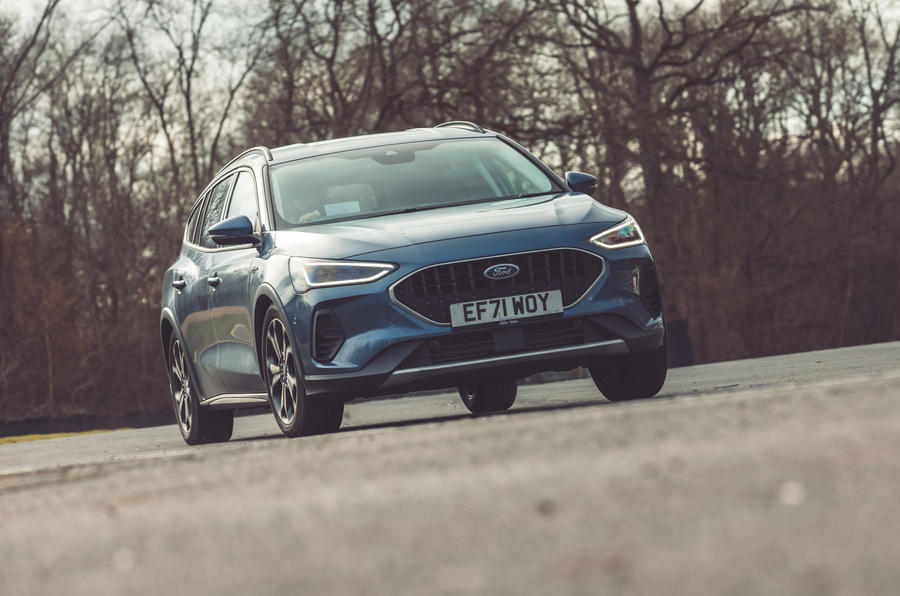
- Design8
- Interior7
- Performance8
- Ride & Handling8
- Costs8
Pros
Agile, playful chassis
Improved ergonomics
Driveline enjoyable to engage with
Cons
Merely acceptable motorway economy
Plain and cheap-feeling interior
Limited engine options
Best for: Handling
For decades, Ford’s mid-sized car – first the Escort and then the Focus – was the default family choice, with estate versions available for those who needed more space.
The estates and more powerful hatchbacks that are fitted with a fully independent rear axle and three-mode adaptive dampers are, in dynamic terms, as sophisticated as the model gets – and feel that way.
With the rise of SUVs, the Focus has been marginalised a bit, to the extent that there won’t be a new generation once the current one’s run ends later in 2025.
We still like it quite a lot, though. It doesn’t offer the premium-ish experience or PHEV drivetrains of some rivals, such as the Peugeot 308 SW, but if you like driving and really being in control, it ticks quite few boxes.
The regular Focus is always powered by a mild-hybrid 1.0-litre three-cylinder petrol engine these days, either with 123bhp and a six-speed manual gearbox or 153bhp and a seven-speed dual-clutch automatic.
Both are pretty good, but we would stick with the cheaper manual. It’s no hot hatch, but it does offer a very natural, satisfying driving experience, and there’s very little to annoy you.
The Focus Estate is practical, too, without being massive on the outside. Boot capacity stands at 608 litres, increasing to 1653 with the seats folded flat.
If you do want that hot hatch experience, the estate is available in 276bhp Ford Focus ST form as well.
Read our Ford Focus Estate review
Save money on a new Ford Focus estate with What Car?
Finance this car with Drivenfi
Back to top
10. Citroën C5 X
8
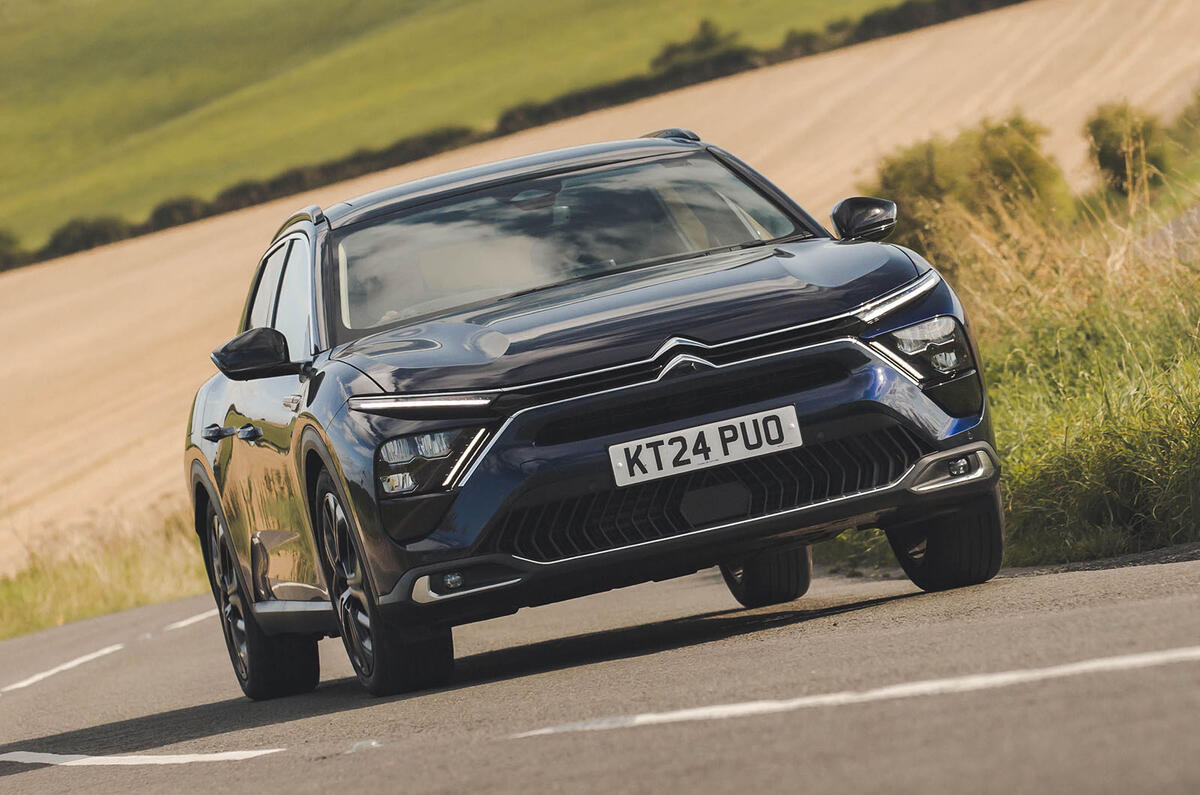
- Design7
- Interior7
- Performance7
- Ride & Handling7
- Costs7
Pros
Supple and soft suspension
Well-built interior
Economical powertrains
Cons
Frustrating brake feel
Occasionally jerky automatic gearbox
Secondary ride disappoints
Best for: The alternative choice
Citroën has rediscovered its knack for doing things differently, and the C5 X is arguably the most tangible proof of this.
The C5 X is a likeable, competent and unique option that offers a rather appealing alternative to equivalent SUVs.
Combining the style of a coupé with the stance of an SUV and the versatility of an estate, the flamboyant French machine forges its own path to practicality. It’s an estate car, Jim, but not as we know it.
What’s clear from the outside is that comfort is the order of the day with the C5 X, even if it’s not quite as accomplished in this area as some of its double-chevron ancestors.
The soft suspension can get unsettled, but otherwise it delivers a supple and easy-going gait, while the squidgy seats are surprisingly supportive. Light steering and a fair amount of body movement mean it’s best at a gentle canter, but consistent grip and accurate steering ensure it’s hardly a chore to drive.
Despite its rakish exterior, the C5 X features a spacious interior that looks good and is well built. There’s a large boot as well, which will swallow a very useful 540 litres of luggage with the rear seats in use, although this drops to 485 litres in the PHEV.



